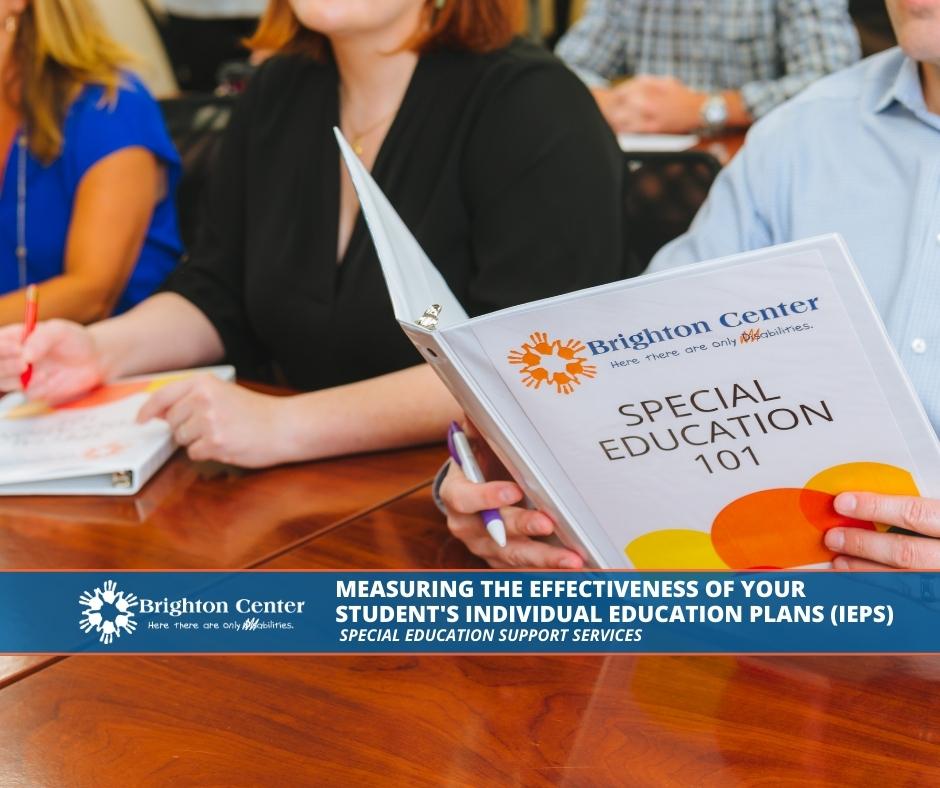Individual Education Plans (IEPs) help students with special educational needs achieve their full potential in school. These plans outline the specific educational goals and accommodations that will help the student succeed. Educators typically create them with =input from the student, their parents, and their teachers. Brighton’s Special Education Advocates help parents understand IEPs and can suggest action steps for improvement for their children.
Collecting data on students with IEPs is an important part of ensuring that these plans are effective. By tracking the student’s progress over time, educators can determine whether the accommodations and strategies outlined in the IEP are working and make changes as necessary.
Types of Data Collected with Individual Education Plans (IEPs)
- Academic Data: This includes information about the student’s grades, test scores, and overall academic progress. By tracking these metrics over time, educators can determine whether the student is meeting their educational goals and making progress toward their Individual Education Plan (IEP) objectives.
- Behavioral Data: This includes information about the student’s behavior in the classroom, such as their attendance, participation, and engagement. By tracking these metrics, teachers can determine whether the student is able to engage with the material and take part in class discussions.
- Progress Monitoring Data: This includes regular assessments of the student’s progress toward their IEP objectives. These assessments can be formal or informal. Furthermore, these assessments can help determine whether the accommodations and strategies in the IEP are effective.
- Parent and Student Feedback: This includes feedback from the student and their parents about how well the IEP is working. Educators can collect this through surveys or interviews. Afterwards, this feedback can help educators adjust the IEP to better meet the student’s needs.
Collecting data on students with IEPs requires a collaborative effort between educators, parents, and the student. It is important to involve all stakeholders in the process of collecting and analyzing data, as this ensures that everyone is on the same page about the student’s progress and needs.
Data Measuring Tools & Strategies
- Progress Monitoring Tools: These are tools that are specifically designed to help educators track the student’s progress towards their IEP objectives. Examples include curriculum-based assessments, standardized tests, and teacher-created assessments.
- Observation Tools: These are tools that teachers can use to observe the student’s behavior in the classroom. Examples include checklists, rating scales, and anecdotal records.
- Technology-Based Tools: There are many technology-based tools available that can help educators collect and analyze data on students with IEPs. These include learning management systems, data management software, and online surveys.
- Collaborative Meetings: Regular meetings between educators, parents, and the student can be an effective way to collect and analyze data on the student’s progress. These meetings can be used to review academic and behavioral data, discuss progress towards IEP objectives, and make changes to the plan as needed.
It is important to ensure teachers effectively use that the data educators collect on students with IEPs. This means that teachers need to be trained on how to collect, analyze, and use data to inform teaching methods and make decisions about the student’s learning plan.
Best Practices for Measuring the Effectiveness of Individual Education Plans
- Setting Clear Goals: Educators should define clear educational goals for the student. Additionally, they use data to track progress towards these goals over time.
- Using Data to Make Informed Decisions: Educators should use data to make informed decisions about the student’s educational plan. This may involve making changes to the IEP or implementing new strategies to help the student succeed.
- Sharing Data with Stakeholders: Educators should regularly share data with parents and the student. This will help ensure that everyone is on the same page about the student’s progress and needs.
- Using Data to Celebrate Success
Show me the DATA!!
Parents spend a lot of time advocating for appropriate IEP goals for their kids to meet their individual needs. But one area of the IEP process that parents lose in the shuffle is measuring the effectiveness of an IEP.
Monitoring a student’s progress is critical to understanding whether the student is responding in a positive way to the services and supports described in the IEP. Data should be captured for every goal listed in the IEP to determine whether a student is making progress toward achieving these goals. Parents can request this data at anytime to check on their child’s progress with each of their IEP goals.
The following links has helpful tips on how to monitor your child’s IEP progress.
https://adayinourshoes.com/how-to-monitor-iep-progress-for-parents/#h-progress-monitoring-iep-goals















